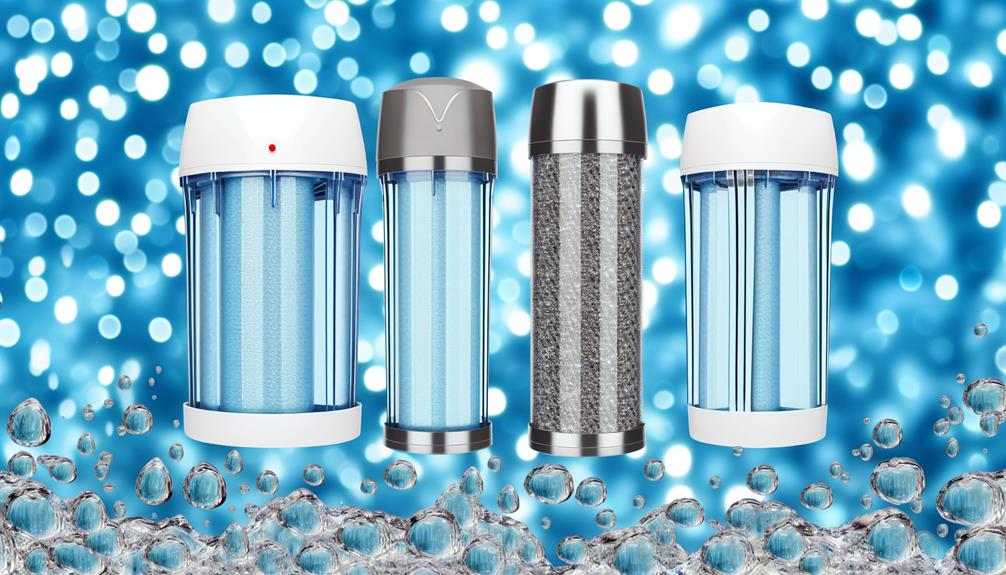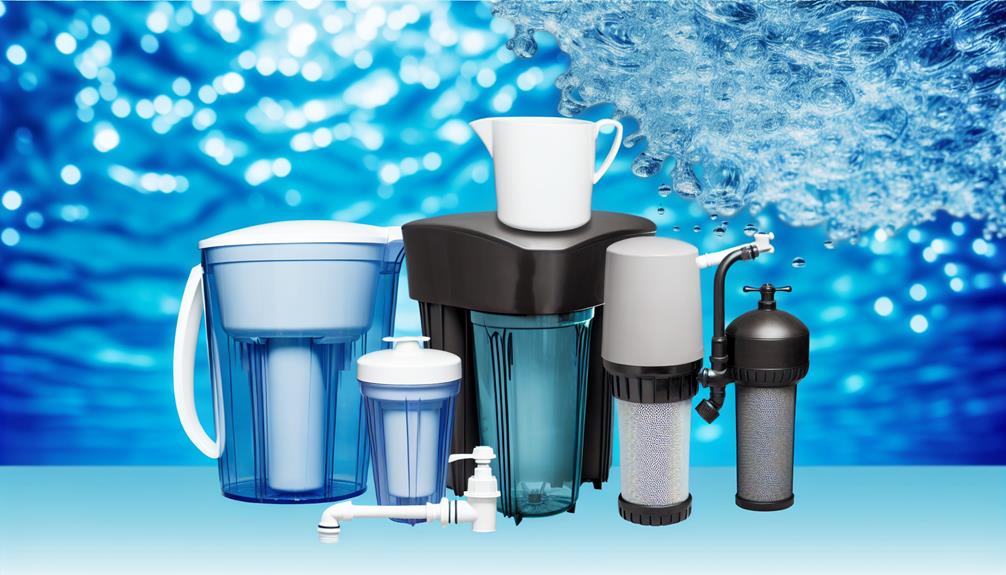Have you ever considered the intricate dance that water must perform to become pure enough for industrial use?
As you navigate the complexities of industrial water filtration, you'll quickly realize that this isn't just about removing visible dirt; it's a meticulous process aimed at reducing a wide array of contaminants to meet both operational standards and regulatory requirements.
Your facility's success hinges on the quality of water coursing through its veins, making the choice of filtration technology a critical decision.
From the various contaminants that each industry may encounter to the plethora of filtration methods at your disposal, understanding the nuances of each system's design and the maintenance involved is paramount.
Let's unpack these layers, one by one, to ensure the lifeblood of your operations—water—is as clean and efficient as possible, while also peering into what the future holds for this essential practice.
Understanding Contaminant Types
Why should you identify the specific contaminants in your industrial water system? Understanding the types of impurities present is critical for selecting an effective filtration technology tailored to your needs. Different contaminants, such as minerals, sediments, bacteria, and chemicals, demand distinct industrial water filtration systems. The types of industrial water you work with directly influence the water quality and, consequently, the standards of water you must achieve.
Filtration systems are designed around the specific contaminants they're meant to address. For instance, filter media that excel at removing larger particles may be ineffective against dissolved minerals. Knowing the exact nature of the contaminants ensures you're not just applying a one-size-fits-all solution but are investing in a filtration strategy that provides real benefits of filtration.
The variety of contaminants can vary widely depending on factors like your industry, location, and the origin of the water. Whether it's surface water carrying sediments or a process stream laden with organic impurities, identifying these allows for precise filtration solutions. For example, UV purification is targeted towards microbial contaminants, while reverse osmosis is optimal for mineral removal. Hence, a deep understanding of the contaminant types is essential for achieving the desired water quality.
Filtration Technologies Explained
Delving into the realm of industrial water filtration, various technologies have been developed to target specific contaminants, ensuring that water quality meets industry standards.
You're likely familiar with some common types of filtration, but let's break down the technical specifics of each method to give you a clearer understanding of how they function within industrial filtration systems:
- Pipeline/Basket Strainers: Utilize screens to capture contaminants; differential pressure indicates cleaning needs.
- Automatic Self-Cleaning Strainers: Trap debris automatically and maintain flow by flushing contaminants systematically.
- Ultraviolet Purification: Employs UV light to inactivate microorganisms, offering chemical-free disinfection.
- Bag Filter: Versatile filters that entrap particles, enhancing clarity and purity with ease of maintenance.
- Reverse Osmosis Systems: Implement a semi-permeable membrane to remove salts, minerals, and organic compounds.
Each filtration method is designed to remove specific contaminants from water. For instance, activated carbon is often used to adsorb organic compounds and chlorine. In contrast, reverse osmosis systems are capable of reducing a broad spectrum of impurities, including dissolved salts. Bag filters are particularly effective for capturing sediment and particulate matter.
It's crucial to match the right filtration technology with the contaminants present to achieve optimal water purity in your industrial processes.
System Design and Configuration
Having explored the various filtration technologies, let's now focus on the critical importance of system design and configuration in optimizing industrial water filtration for your specific needs.
The right system design maximizes efficiency in the filtration of raw water and meets your unique purification needs while keeping maintenance costs manageable.
System design and configuration must consider the types of industrial filtration that align with the contaminants in the water. Whether you're part of food and beverage or chemical production, each industry has distinct requirements. For instance, reverse osmosis might be necessary for demineralization, while ultraviolet purification could be vital for microbial control.
Your industrial water filters must accommodate the flow rates your operations demand without compromising on contaminant removal efficacy. The inclusion of add-ons such as control valves or UV sterilizers can enhance the performance of your filtration system but must be integrated thoughtfully to maintain system integrity.
Moreover, the configuration of treatment plants must take into account spatial constraints within your facility. Every component, from pipeline strainers to chemical injection systems, needs to be accessible for maintenance and configured to work synergistically.
Maintenance and Monitoring
To maintain the efficacy of industrial water filtration systems, it's crucial to implement a rigorous maintenance and monitoring routine. Your diligent attention to these procedures ensures that your Industrial Water Filter remains a bulwark against contaminants, delivering reliable filtration that your operations demand.
Consider these critical actions:
- Regularly inspect and clean filtration systems to prevent performance degradation.
- Monitor pressure levels and flow rates to swiftly flag and address issues.
- Replace filter cartridges or media in line with the manufacturer's guidelines.
- Conduct routine water quality testing to confirm the treatment's success.
- Maintain detailed records of maintenance and water quality for regulatory adherence and performance tracking.
These steps are integral for ensuring that the various types of filter systems within your facility—whether employing purging valves or other advanced features—continue to operate at optimal efficiency. Vigilant maintenance not only preserves the quality of the processed water but also extends the lifespan of your equipment.
Consistent monitoring acts as an early warning system, allowing you to intervene before minor issues escalate into costly problems. By adhering to these technical and precise practices, you ensure that your system's performance remains uncompromised.
Future Trends in Filtration
While maintaining current systems is essential, it's equally important to keep an eye on the horizon where advancements in nanotechnology and artificial intelligence promise to revolutionize industrial water filtration. These emerging technologies are paving the way for advanced filtration solutions that are more efficient, compact, and capable of addressing the increasing concerns for water security and water shortage.
You'll find that nanotechnology is particularly potent in developing filters to purify even the most challenging contaminants, such as those found in salt water. These advanced systems can turn brackish or seawater into purified water, ensuring a steady supply where freshwater is scarce. Artificial intelligence is set to further optimize these processes, making filtration setups smarter and more responsive to changing conditions.
Sustainability is another key trend. Environmentally friendly filtration options, including bio-based filters and deep bed ecological media, are factors to consider for reducing the industrial footprint. With water scarcity becoming a pressing issue, such innovations not only protect the environment but also secure long-term water supplies.
Moreover, IoT technology integration enables real-time monitoring of filtration systems, ensuring peak performance and immediate issue resolution in various industrial applications. Modular and customizable filtration solutions are also on the rise, allowing for tailored approaches to specific contaminant removal needs.

